Until 1999, the building was the Coliseum cinema, opening in December 1926. The name COLISEUM is in capital letters above the front entrance and high up on the side wall. The architect was C Franklin Murphy. In the early 1930s, few packed them in like Dr Walford Brodie, known as ‘The Electrical Wizard of the North’. The smartly dressed Brodie, with his waxed handle-bar moustache, was once a very big name in show business. The Scots-born entertainer was famous for ‘shocking’ magic tricks using electricity and even an electric chair.
A sketch of Bodie with the electrocution chair.
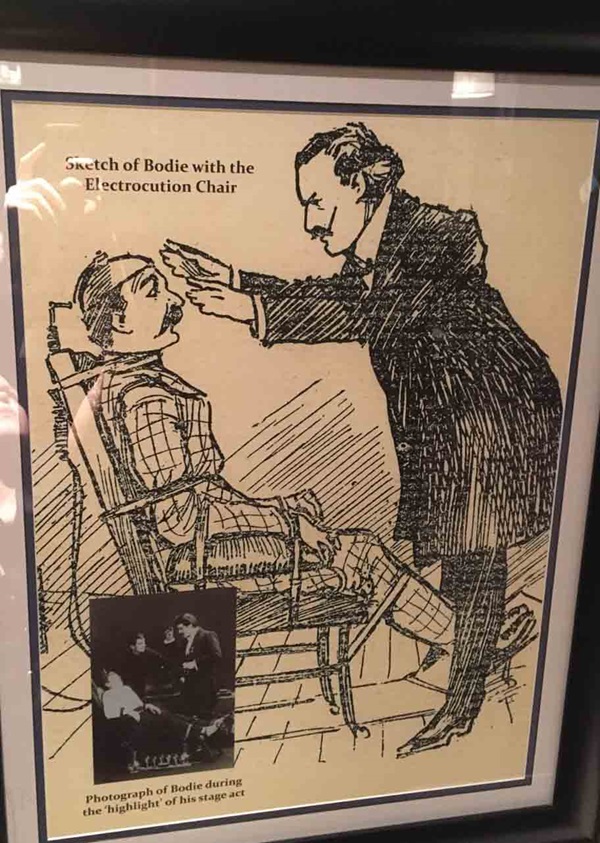
Bodie (the Electrical Wizard) in hypnotist mode – ‘putting on the ‘fluence’.
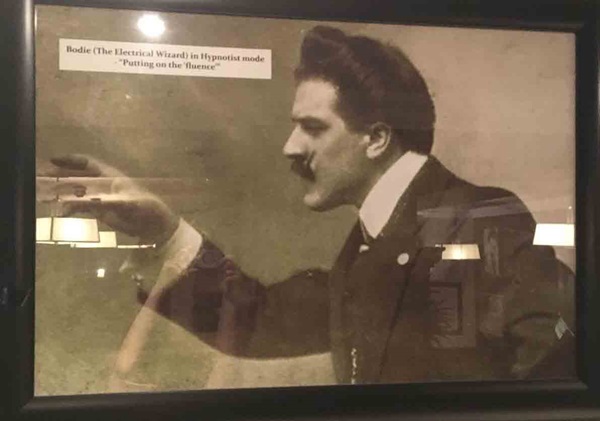
Photographs and an illustration of Frankenstein – the great electric shock/ horror story.
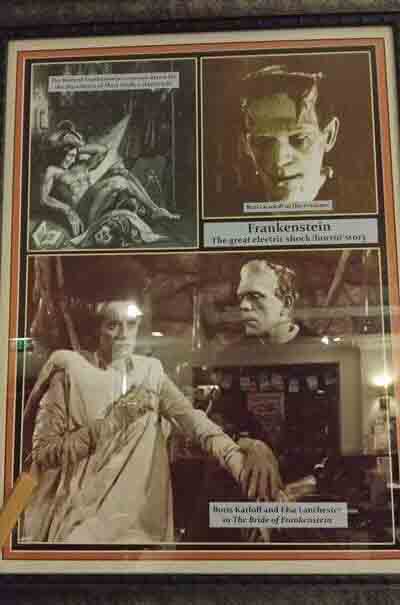
Photographs taken from Mary Shelley’s Frankenstein.
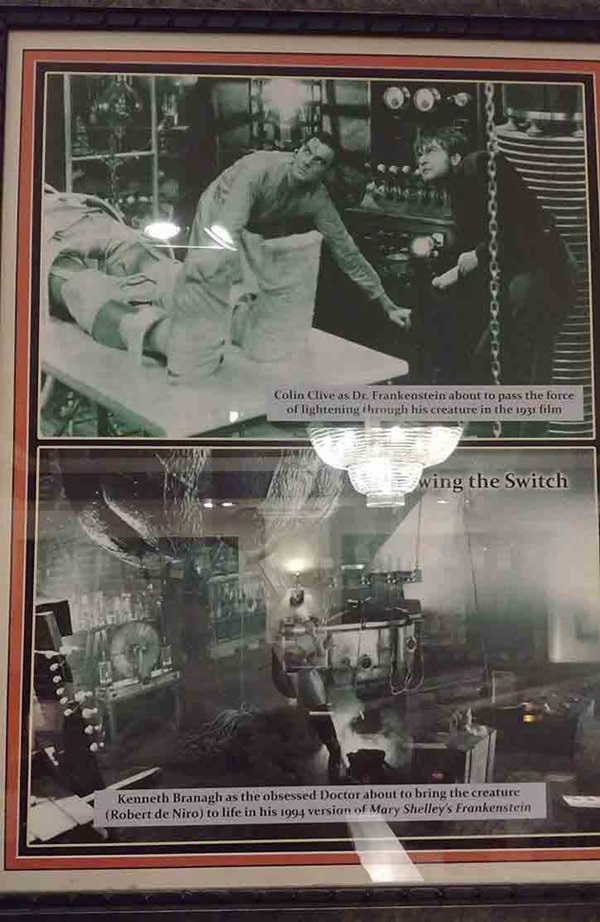
Top: Colin Clive as Dr Frankenstein about to pass the force of lightening through his creature in the 1931 film.
Bottom: Kenneth Branagh as the obsessed doctor about to bring the creature (Robert de Niro) to life in his 1994 version of Mary Shelley’s Frankenstein.
A programme from a charity concert held at the Coliseum on Wednesday 15 December 1926.
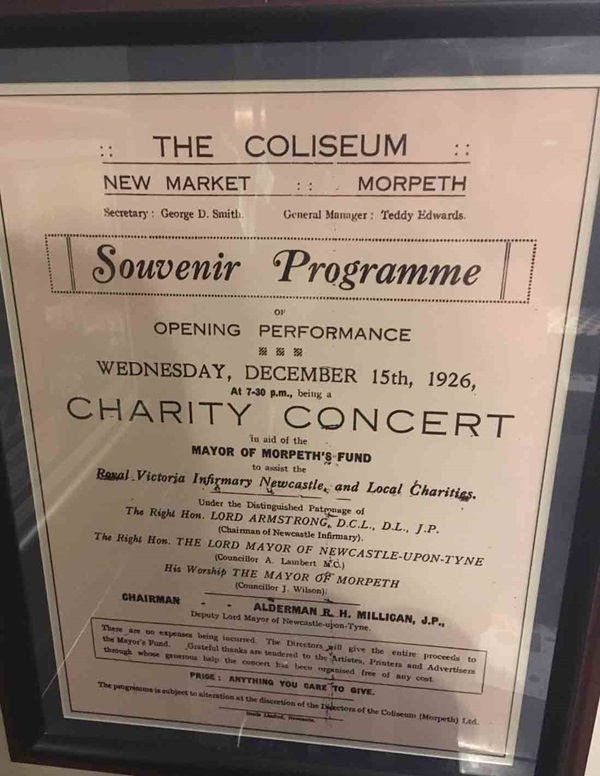
A photograph and text about the Coliseum cinema.
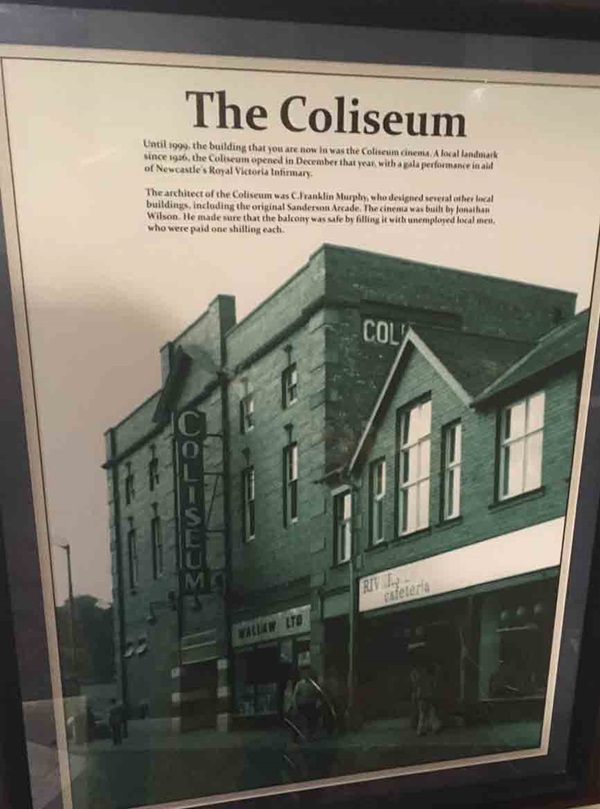
The text reads: Until 1999, the building that you are now in was the Coliseum cinema. A local landmark since 1926, the Coliseum opened in December that year, with a gala performance in aid of Newcastle’s Royal Victoria Infirmary.
The architect of the Coliseum was C Franklin Murphy, who designed several other local buildings, including the original Sanderson Arcade. The cinema was built by Jonathan Wilson. He made sure that the balcony was safe by filling it with unemployed local mean, who were paid one shilling each.
A photograph of the youth of Morpeth gathered outside the Coliseum sometime in the 1930s.
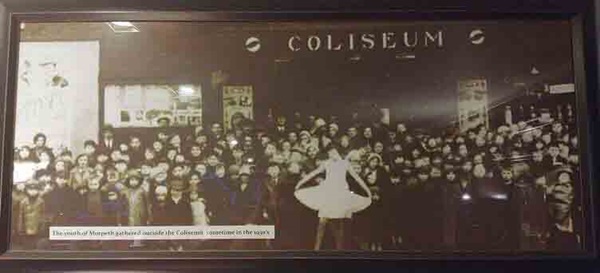
Prints and text about Cuthbert Collingwood.
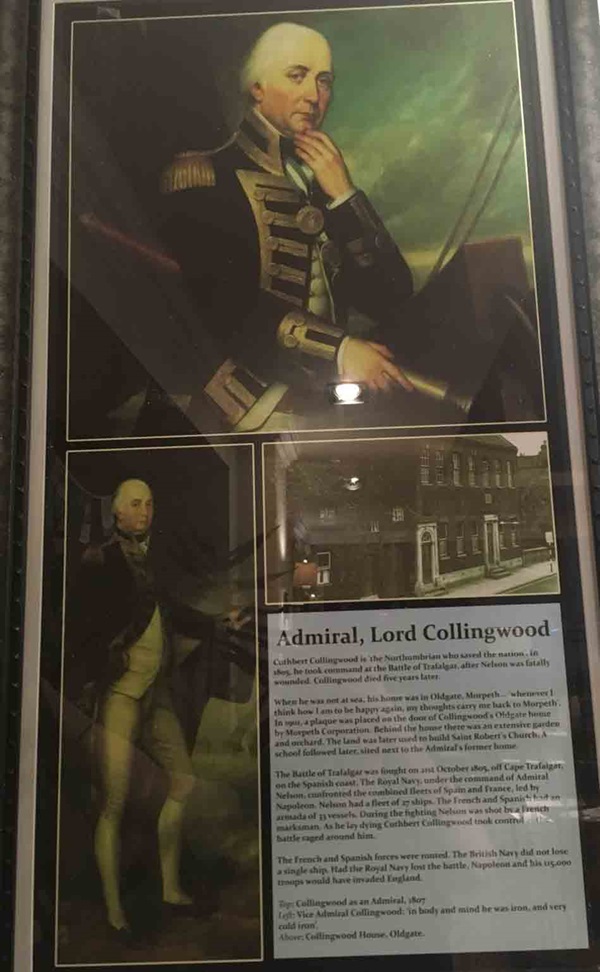
The text reads: Cuthbert Collingwood is ‘the Northumbrian who saved the nation’. In 1805, he took command at the Battle of Trafalgar, after Nelson was fatally wounded. Collingwood died five years later.
When he was not at sea, his home was in Oldgate, Morpeth… ‘whenever I think how I am to be happy again, my thoughts carry me back to Morpeth’. In 1901, a plaque was placed on the door of Collingwood’s Oldgate home by Morpeth Corporation. Behind the house there was an extensive garden and orchard. The land was later used to build Saint Robert’s Church. A school followed later, sited next to the admiral’s former home.
The Battle of Trafalgar was fought on 21 October 1805, off Cape Trafalgar, on the Spanish coast. The Royal Navy, under the command of Admiral Nelson, confronted the combined fleets of Spain and France, led by Napoleon. Nelson had a fleet of 27 ships. The French and Spanish had an armada of 33 vessels. During the fighting Nelson was shot by a French marksman. As he lay dying Cuthbert Collingwood took control as the battle raged around him.
The French and Spanish forces were routed. The British Navy did not lose a single ship. Had the Royal Navy lost the battle, Napoleon and his 115,000 troops would have invaded England.
Top: Collingwood as an admiral, 1807
Left: Vice Admiral Collingwood: ‘in body and mind he was iron, and very cold iron’
Above: Collingwood House, Oldgate.
An illustration, photographs and text about castles, monks and keys.
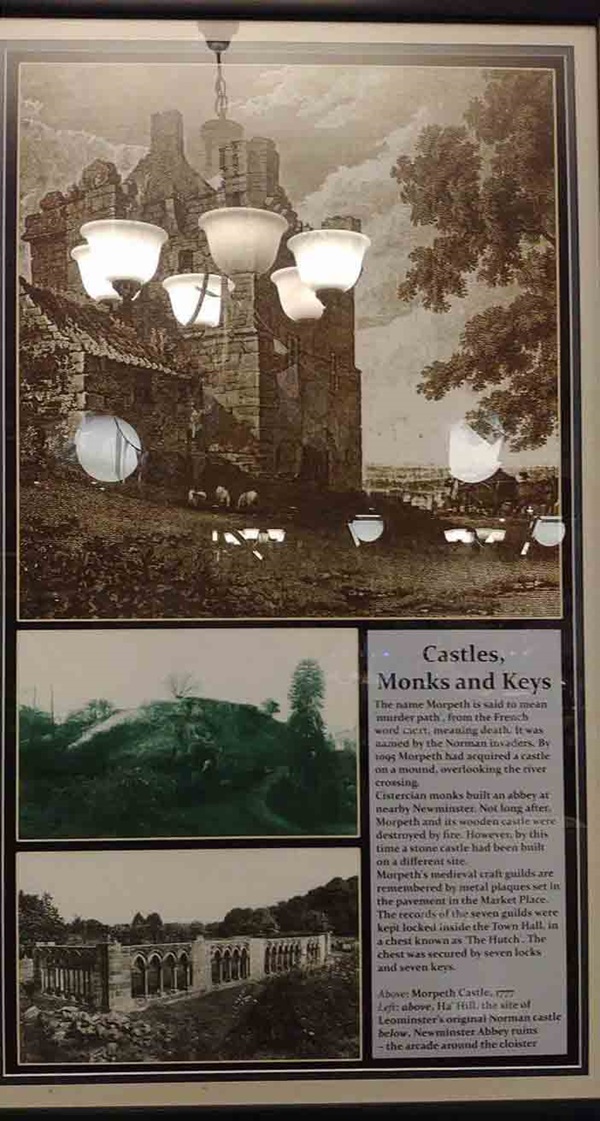
The text reads: The name Morpeth is said to mean ‘murder path’, from the French word mort, meaning death. It was named by the Norman invaders. By 1095 Morpeth had acquired a castle on a mound, overlooking the river crossing.
Cistercian monks built an abbey at nearby Newminster. Not long after, Morpeth and its wooden castle were destroyed by fire. However, by this time a stone castle had been built on a different site.
Morpeth’s medieval craft guilds are remembered by metal plaques set in the pavement in the Market Place. The records of the seven guilds were kept locked inside the Town Hall, in a chest known as ‘The Hutch’. The chest was secured by seven locks and seven keys.
Above: Morpeth Castle, 1777
Left: above, Ha’ Hill, the site of Leominster’s original Norman castle, below, Newminster Abbey ruins – the arcade around the cloister.
A photograph and text about Thomas Burt.
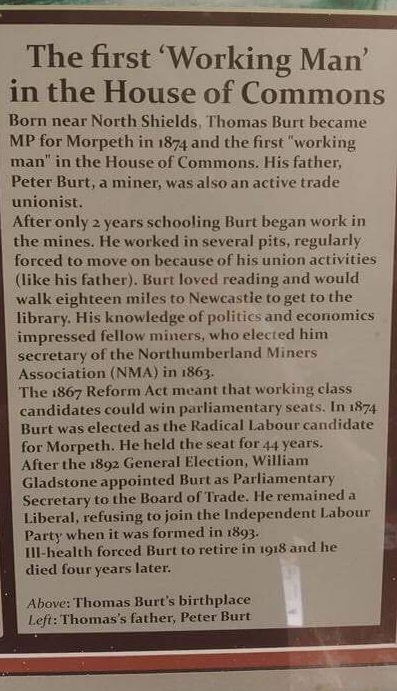
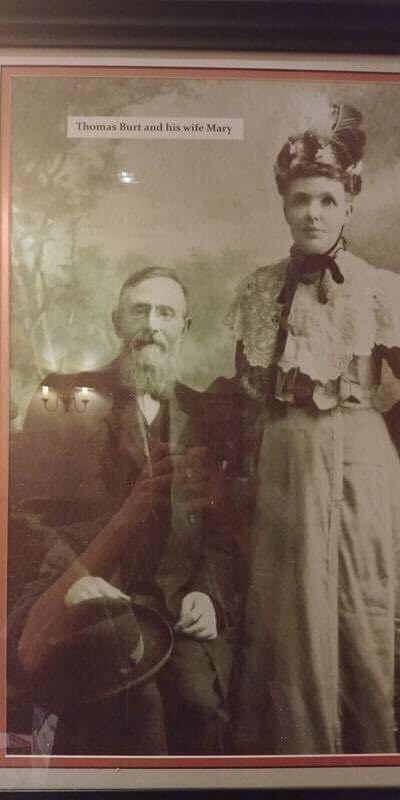
The text reads: Born near North Shields, Thomas Burt became MP for Morpeth in 1874 and the first ‘working man’ in the House of Commons. His father, Peter Burt, a miner, was also an active trade unionist.
After only 2 years schooling Burt began work in the mines. He worked in several pits, regularly forced to move on because of his union activities (like his father). Burt loved reading and would walk eighteen miles to Newcastle to get to the library. His knowledge of politics and economics impressed fellow miners, who elected home secretary of the Northumberland Miners Association (NMA) in 1863.
The 1867 Reform Act meant that working class candidates could win parliamentary seats. In 1874 Burt was elected as the Radical Labour candidate for Morpeth. He held the seat for 44 years. After the 1892 general election, William Gladstone appointed Burt as parliamentary secretary to the Board of Trade. He remained a Liberal, refusing to join the Independent Labour Party when it was formed in 1893.
Ill health forced Burt to retire in 1918 and he died four years later.
Above: Thomas Burt’s birthplace
Left: Thomas’s father, Peter Burt.
Photographs and text about market days.
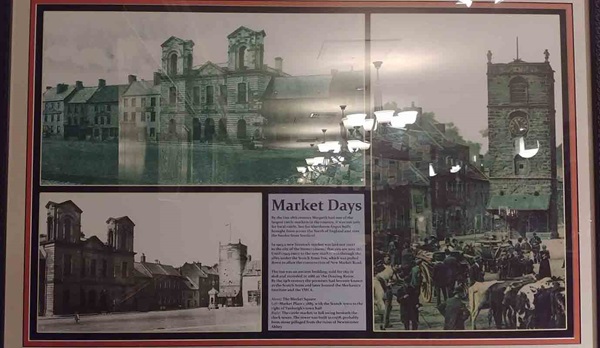
The text reads: By the late 18th century Morpeth had one of the largest cattle markets in the country. It was not only for local cattle, but for Aberdeen Angus bulls brought from across the north of England and over the border from Scotland.
In 1903 a new livestock market was laid out (next to the site of the former cinema that you are now in). Until 1925 entry to the new market was through the alley under the Scotch Arms Inn, which was pulled down to allow the construction of New Market Road.
The inn was an ancient building, sold for £60 in 1628 and recorded in 1686 as the Dining Room. By the 19th century the premises had become known as the Scotch Arms and later housed the Mechanics Institute and the YMCA.
Above: The Market Square
Left: Market Place c1884, with the Scotch Arms to the right of Vanburgh’s town hall
Right: The cattle market in full swing beneath the clock tower. The tower was built in c1978, probably from stone pillaged from the ruins of Newminster Abbey.
An illustration of Market Place, c1820.
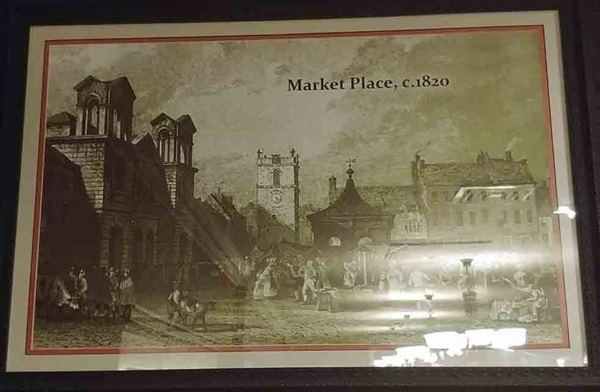
Prints and text about Sir George Downing.
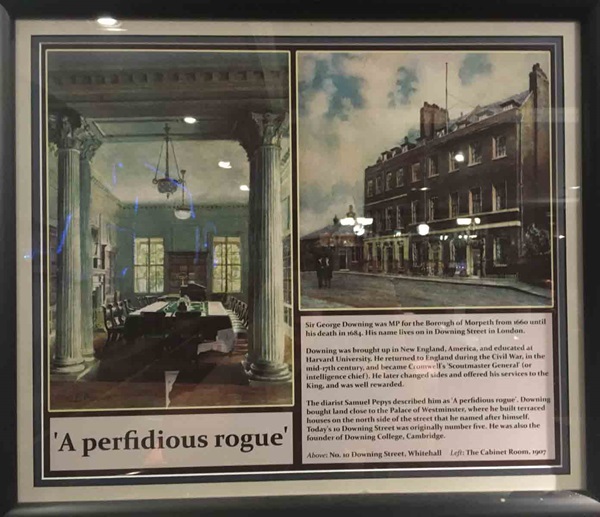
The text reads: Sir George Downing was MP for the Borough of Morpeth from 1660 until his death in 1684. His name lives on in Downing Street in London.
Downing was brought up in New England, America, and educated at Harvard University. He returned to England during the Civil War, in the mid 17th century, and became Cromwell’s ‘Scoutmaster General’ (or intelligence chief). He later changed sides and offered his services to the King, and was well rewarded.
The diarist Samuel Pepys described him as “a perfidious rouge”. Downing brought land close to the Palace of Westminster, where he built terraced houses on the north side of the street that he named after himself. Today’s 10 Downing Street was originally number five. He was also the founder of Downing College, Cambridge.
Above: No. 10 Downing Street, Whitehall
Left: The Cabinet Room, 1907.
A light installation entitled Live Circuit, by Stephen Lunn.
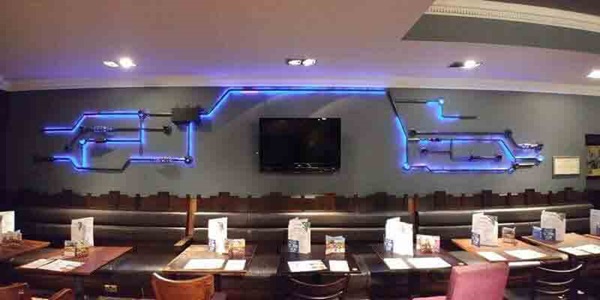
“Life is like a performance. Are we not all acting out our play?
The same with ‘live circuit’, empty bottles and scrap steel are brought back to life”.
It is an old story that electricity brings the dead to life. Ever since its properties were first discovered, the link between electricity and life, especially life revived in matter that has reverted to ‘ashes’ and ‘dust’, has stimulated the creative imagination of artists. Art, the creative impulse, like the electric surge, brings mere ‘stuff’ to life, links disparate parts into a circuit, and creates a sequence, a plot and a story, a coherent form spreading out in time and space.
The performances of Dr Walford Bodie, the Electrical Wizard, were one such circuit, linking his audience, his subject and himself to the astonishing power he claimed to control.
External photograph of the building – main entrance.
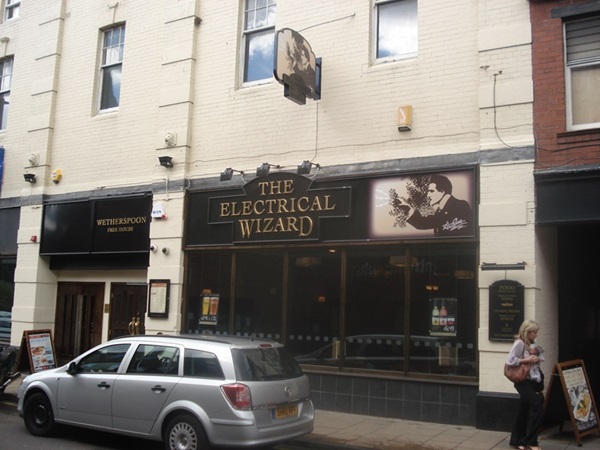
If you have information on the history of this pub, then we’d like you to share it with us. Please e-mail all information to: pubhistories@jdwetherspoon.co.uk